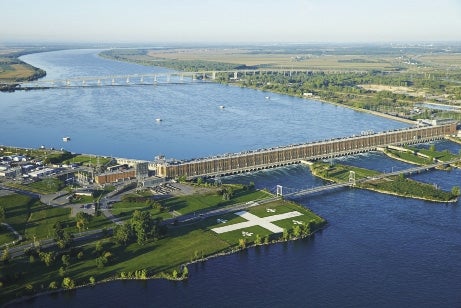What you need to know in energy for 2017
 PHOTO/Hydro Quebec
Onshore wind and hydroelectric are the cheapest forms of renewable energy in terms of building power plants, at $65 and $68 per megawatt hour, the U.S. Energy Information Administration said.
PHOTO/Hydro Quebec
Onshore wind and hydroelectric are the cheapest forms of renewable energy in terms of building power plants, at $65 and $68 per megawatt hour, the U.S. Energy Information Administration said.
Years of talks about making renewable resources a bigger part of Massachusetts' energy consumption started to pay off this year, when the state government passed a new law with a strong emphasis on renewables.
The law requires utilities to enter into 15-20 year contracts with power providers to bring 1,600 megawatts of offshore wind power and 1,200 megawatts of other renewables, including onshore wind, solar, and hydropower, to Massachusetts.
As contracts are solicited, Massachusetts businesses will start to see some answers to the many questions still out there about the future of the energy landscape.
More clarity on wind and hydropower pricing
Critics of the new energy law say it disrupts competition by effectively handing over a third of the state's energy market to hydropower and offshore wind, which is expensive.
This, they said, could lead to unprecedented price increases.
Right now, it's hard to say what those increases could look like, but by the middle of next year this will be more clear.
Utility companies have until the end of June to solicit proposals for offshore wind, and the beginning of April to seek contracts for other renewables.
As contracts start to roll in, so will more answers.
Energy storage targets
A less-discussed part of the new energy law calls for the state to develop energy storage targets and initiatives this year, and more and more local companies are working on batteries and other innovations that could lead to major breakthroughs in this space.
By law, the state has to set energy storage goals this year, so there will continue to be emphasis in this area.
Uncertain future for natural gas transmission
The push for more natural gas capacity hit a major bump in the road this year when the state Supreme Judicial Court ruled that utilities can't ask electric ratepayers to cover new pipeline construction costs, rendering new projects effectively lifeless.
But since nearly 50 percent of the region's current energy supply comes from natural gas, it's hard to imagine new pipelines will become a thing of the past.









0 Comments